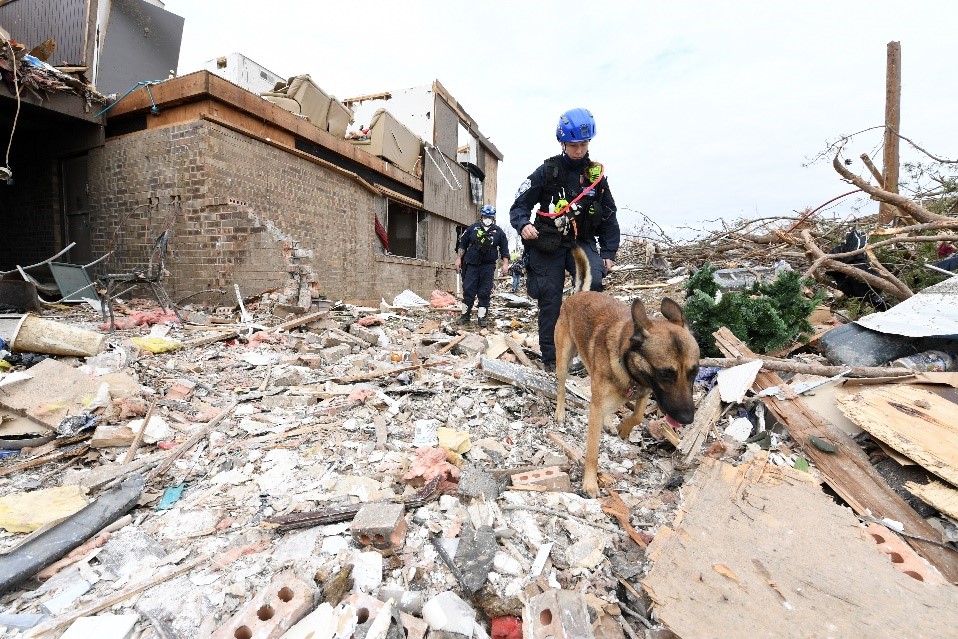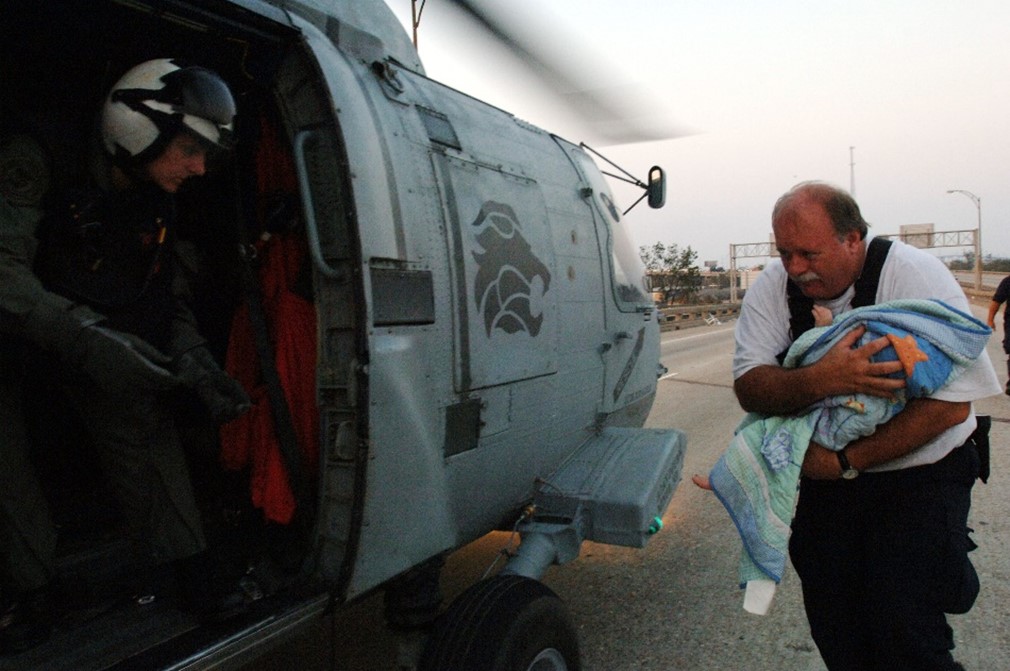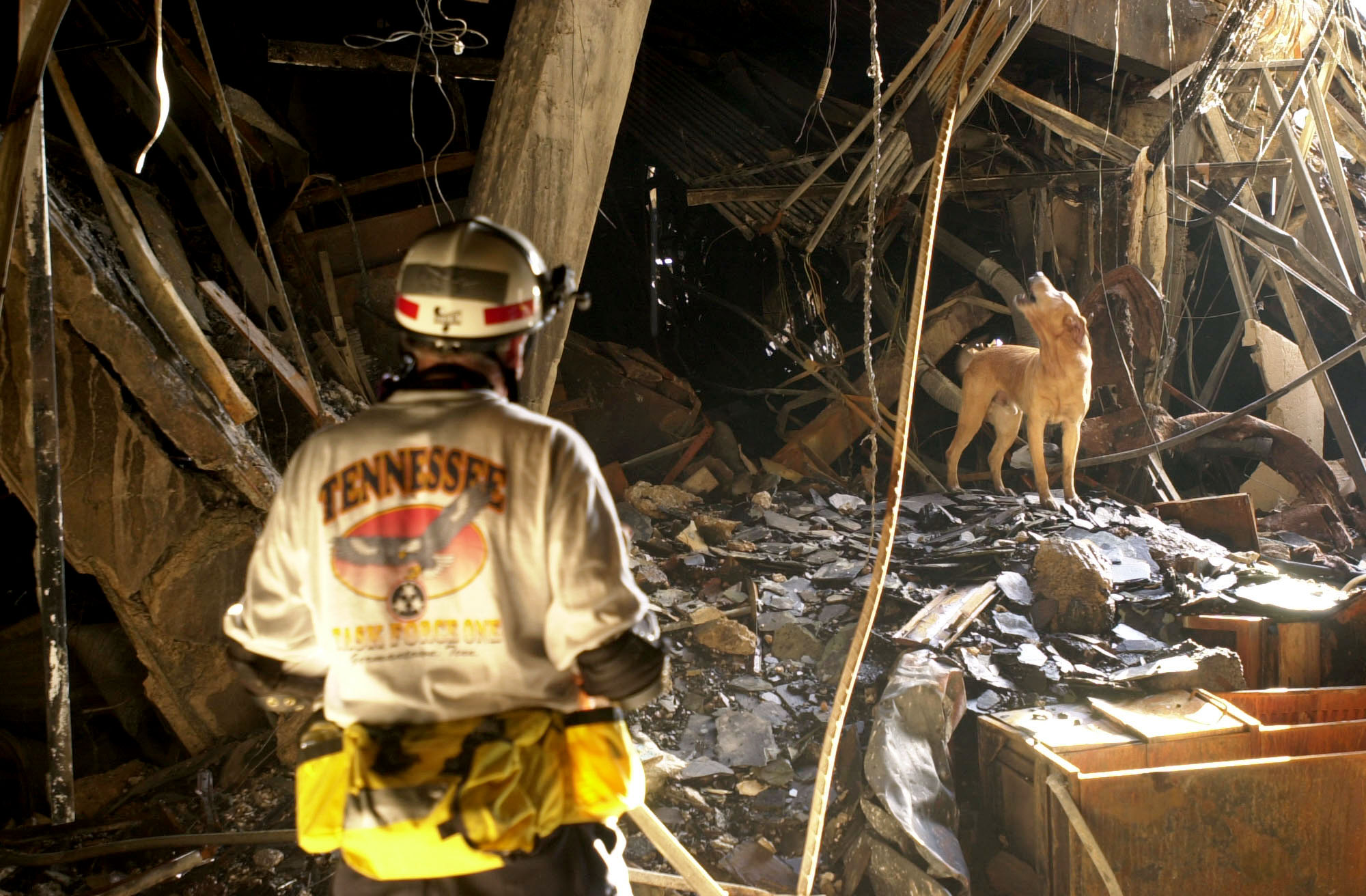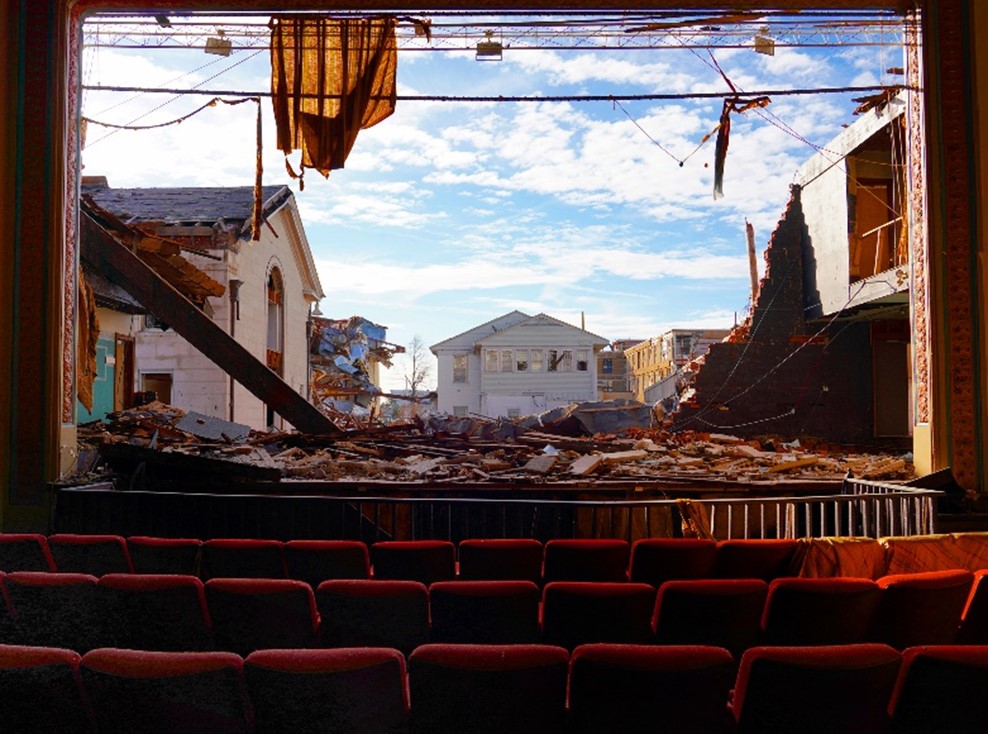
Dawson Springs, Kentucky. Dec. 15, 2021. Areas destroyed by the December tornadoes. Photo by Jocelyn Augustino.
Photographs are a powerful storytelling tool that can stir emotions and put a human face on the effects of disasters.
By showing the scope of a disaster and the work done to help survivors, FEMA photographers are in the unique position of telling FEMA’s story when words fail the imagination.
Jocelyn Augustino, a reservist in the External Affairs Cadre, shared her experience capturing the work the agency does to support communities and survivors. She understands the value of documenting the scope of a disaster and the effects survivors face.
“There are certainly lots of photographs that we take that support the overall picture of the disaster,” Augustino said. “The damage photographs are certainly a necessity as they show a bigger picture of the incident and can be used to show the White House, Congress, other federal partners and the public what is happening at a disaster.”
Photographs can also build the public’s trust and show the genuine desire to serve people on their worst day. That’s why her favorite shots display the hard work done by the FEMA Urban Search & Rescue Teams.
“The way FEMA teams can assist when a community is in their worst moments, and how they support the local community, is something that I will always be in awe of,” said Augustino. “Response is certainly a part of the whole FEMA process during a disaster, and for me these images are so valuable for people to see.”

Dawson Springs, Kentucky. Dec. 16, 2021. A FEMA US&R team searches for survivors after a tornado destroyed many buildings in the town. Photo by Jocelyn Augustino.
Beyond documenting the details of a disaster, capturing the experience of those on the ground is important to Augustino.
“I really look for moments of ‘people helping people,” she said. “Whether that is FEMA or a partner agency of FEMA, the volunteer agencies helping people or special moments when a disaster survivor interacts with a FEMA representative. These images are so valuable for people to see. Some people are skeptical that government works, the moments when people assisting those in need happen organically, gives me hope and I hope that when others see some of the images, it can also offer them a glimpse that government does in fact work.”

New Orleans, Sept. 9, 2005. A FEMA US&R member rushes a baby in need of medical attention onto a Navy helicopter. Photo by Jocelyn Augustino.
A Massachusetts native who studied political science and international relations, discovered her true passion for photography while studying in France, Augustino enjoys history; she understands the importance of documenting disasters.
“I think it’s imperative there is a historical record of the life altering events that impact communities small and large,” she said. “FEMA has a unique historical perspective on what happens to our country from a disaster perspective. Documenting these large-scale declared disasters really is a part of our country’s history.”
Augustino first deployed with FEMA in September 1995 after Hurricane Marilyn hit the US Virgin Islands. Her first assignment was to document the trip of FEMA Director James Lee Witt. After a busy hurricane season and a few more trips with Director Witt, she was encouraged to become a reservist.
From her home in the Washington, D.C. area, she has responded to more than 70 disasters and events since then, including covering the 9/11 response at the Pentagon. She was also in Baton Rouge, Louisiana, the day before Hurricane Katrina made landfall.
“It is a humbling honor to go into communities and see America at her most tragic moments, while witnessing the incredible resilience and determination of her people,” said Augustino.

Arlington, Virginia, Sept. 14, 2001 -- Trained rescue dog Gus and his trainer Ed Apple with the Tennessee Task Force One Search & Rescue search for survivors in the wreckage at the Pentagon. Photo by Jocelyn Augustino.
Augustino has documented tornadoes, floods, winter storms, hurricanes and the federal response to COVID-19.
“The COVID-19 response is something I would have never imaged,” she said. “I spent three months traveling throughout Region 4.”
Her proudest contribution during the COVID-19 response was coming up with a black and white portrait series that was turned into a video used to inspire people to get vaccinated. The video, “I Got the Shot” was distributed by FEMA and other federal agencies.
Working for FEMA has given her the opportunity to use her skills to document the experiences of both survivors and responders.
“I hope that my images tell a story for people who are not on ground. I try to maintain a sensitivity of what I am shooting and seek out beautiful or special moments when the world is really turned upside down,” said Augustino. “I think if you keep your heart open and are sensitive to the events happening around you, you can always find something compelling and interesting.”

Mayfield, Kentucky, Dec. 24, 2021. A powerful tornado tore a wall from the American Legion building.


